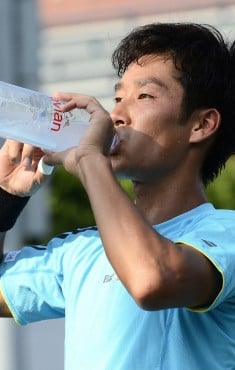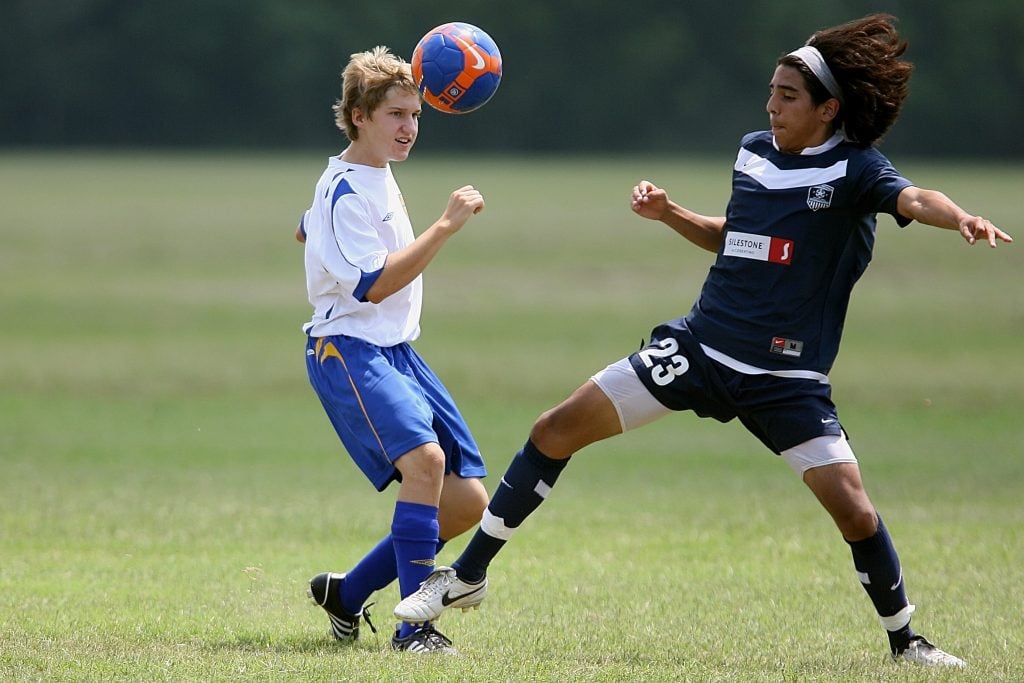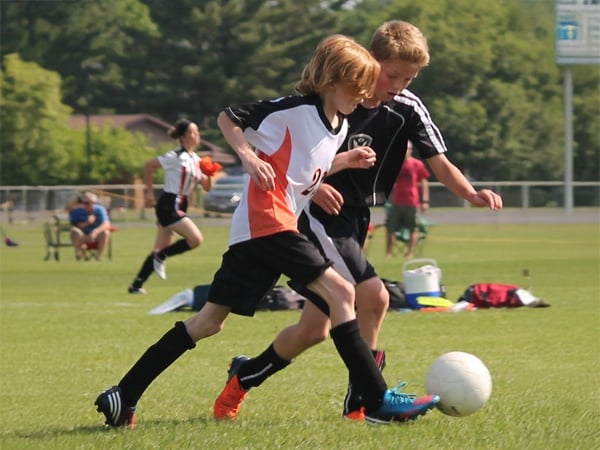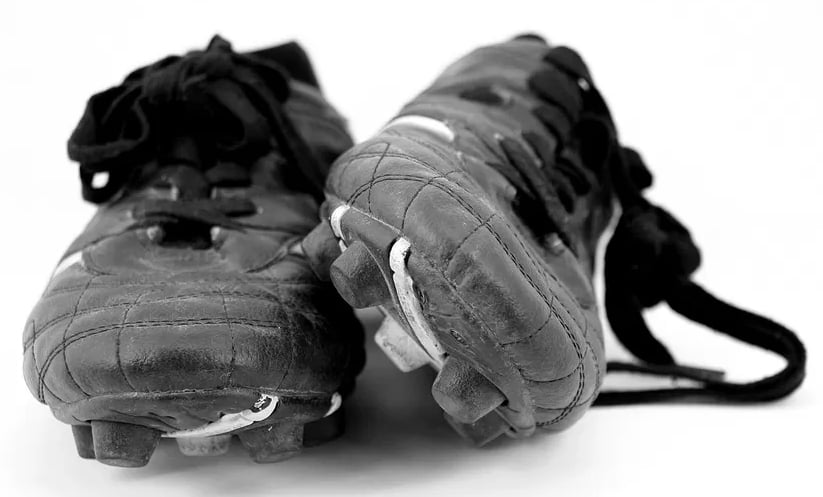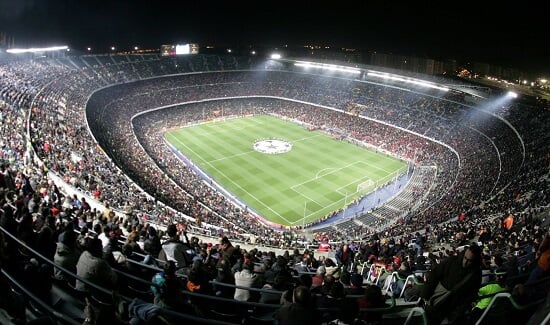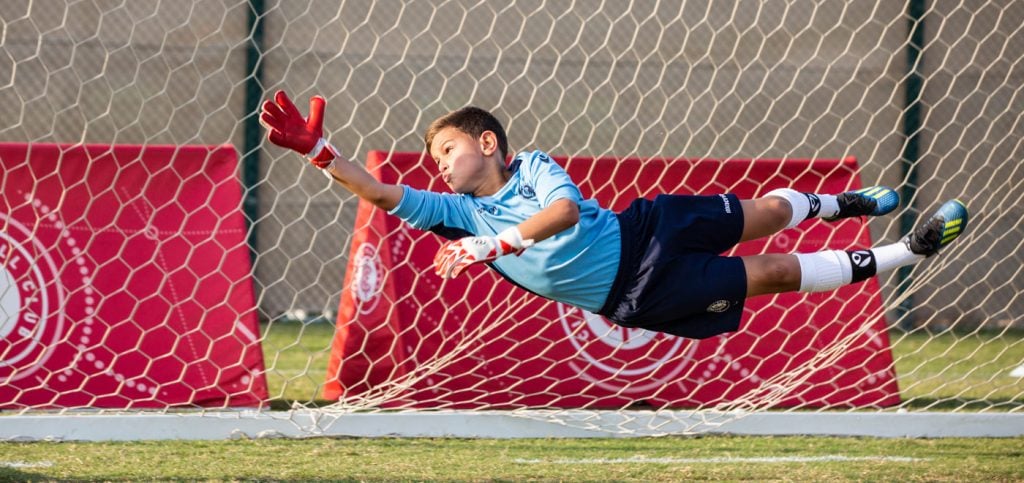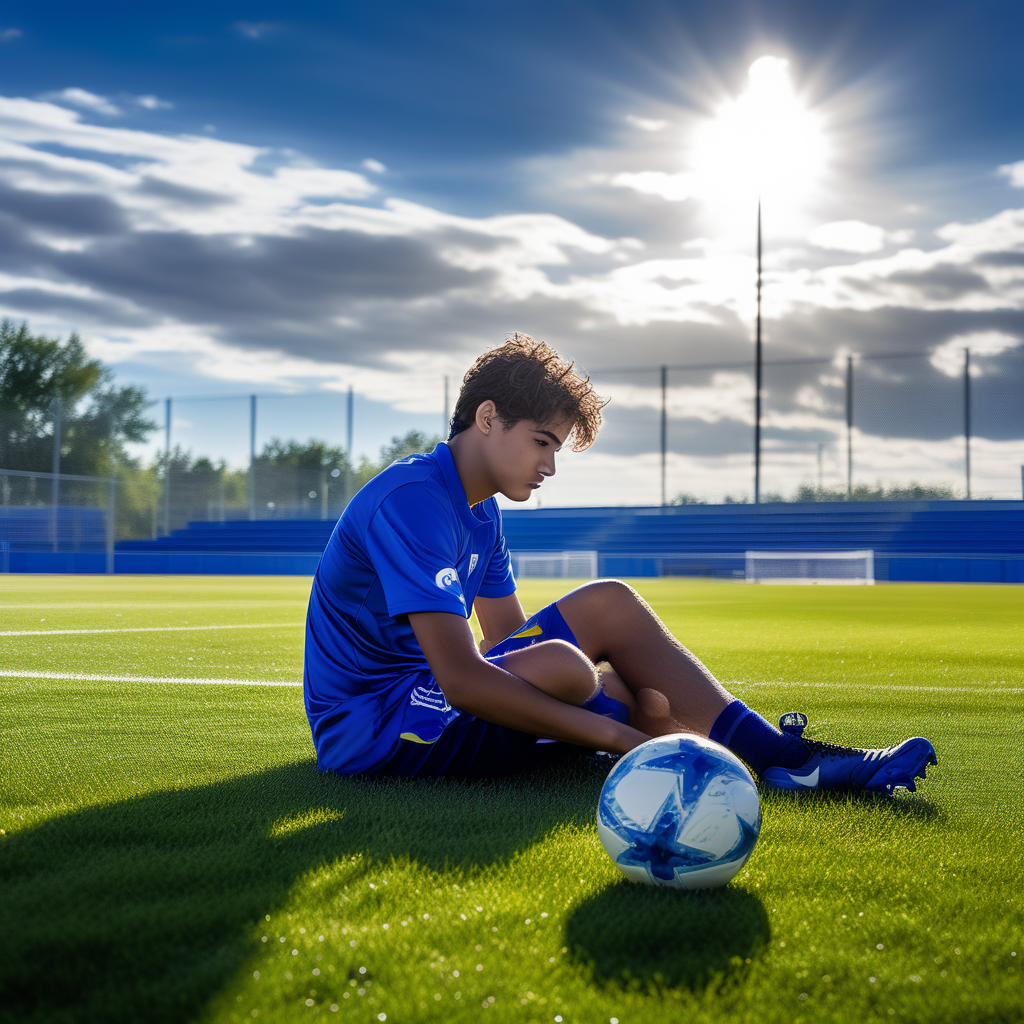Table of Contents
When children practice sports regularly, their nutrition not only affects their energy, but also their development, recovery and endurance. Good sports nutrition for children is key for them to perform at their best and, above all, to avoid problems such as fatigue, dehydration or even injury.
Many parents wonder what to include in their athletic children’s diet and how to make sure they are getting the right nutrients. In this guide, you’ll learn what an athletic child’s diet should look like, how many calories they need based on their activity level and what foods are essential to their performance. Let’s get started.
what should a child athlete’s diet be like?
Sports nutrition for children should focus on three fundamental pillars: sufficient energy, nutrient balance and adequate hydration. Regardless of the sport they play, it is crucial that their meals provide them with what they need to perform in training and competition without compromising their growth.
Enough energy to perform and recover
The body of a child athlete expends more energy than that of a sedentary child. For this reason, their diet must guarantee a sufficient amount of calories, especially if they participate in intensive training.
According to the Food Guide for Schoolchildren and Adolescent Athletes of the Universidad Técnica del Norte, a balanced diet should cover the energy expenditure without falling into excesses or deficits. This is key to avoid problems such as fatigue or loss of muscle mass.
Essential nutrients for child athletes
A diet for child athletes should include the right combination of carbohydrates, proteins and healthy fats:
- Carbohydrates: they are the main source of energy. It is recommended that they represent about 60% of the daily diet. Ideal sources: oatmeal, whole grain bread, rice, quinoa and fruits.
- Proteins: Essential for muscle recovery and growth. They should contribute approximately 15% of the total caloric intake. Ideal sources: eggs, chicken, fish, Greek yogurt and nuts.
- Healthy fats: Help in the absorption of vitamins and protect vital organs. They should represent 25% of the diet. Ideal sources: avocado, nuts, olive oil and oily fish.
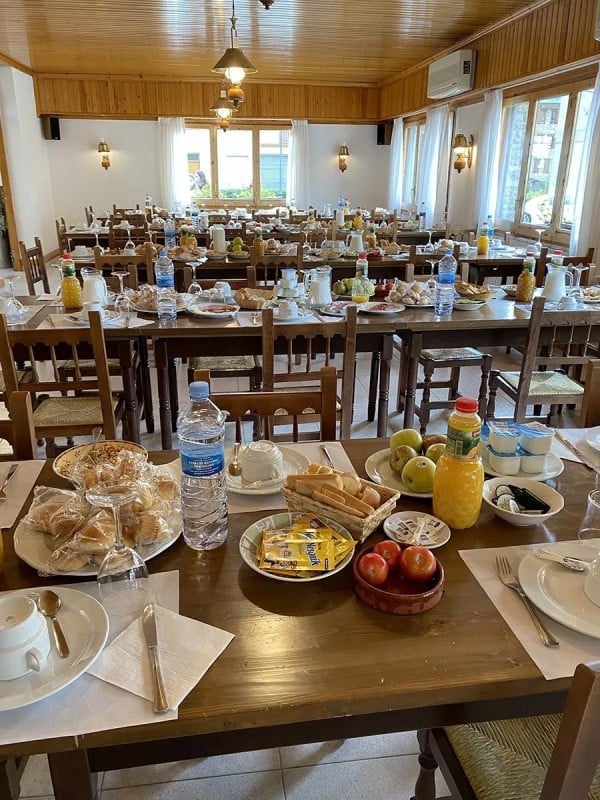
Hydration: key to performance
One aspect that should not be neglected is the consumption of liquids. The Madrid Association of Pediatrics recommends that sports children drink water before, during and after exercise to avoid dehydration, which can reduce performance and increase the risk of cramps or fatigue.
If the activity lasts more than an hour or is performed in very hot weather, a drink with electrolytes can help replenish mineral salts.
how many calories do athletic children need?
A child’s calorie needs vary depending on his or her age, activity level and type of training. Active children need more energy to maintain a balance between what they expend and what they consume.
Factors influencing caloric requirement
Every child is different, but some key factors determine how many calories they should consume:
- Age and weight: Older, heavier children tend to expend more energy.
- Intensity and duration of exercise: A 30-minute workout does not require the same amount of calories as a two-hour workout.
- Type of sport: Highly demanding sports such as swimming or soccer consume more energy than less intense ones.
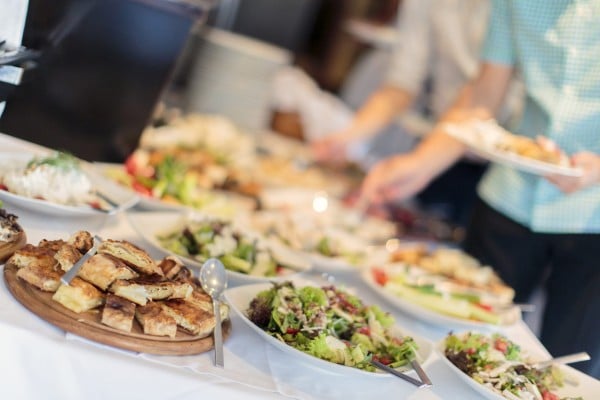
According to KidsHealth, athletic children may require between 500 and 1,000 extra calories a day, depending on their level of training.
Table of recommended caloric intake
The Spanish Academy of Nutrition and Dietetics suggests the following approximate calorie recommendations per day:
| Age (children) | Not active | Somewhat active | Active |
| 4 – 8 years old | 1,200-1,400 kcal | 1,400-1,600 kcal | 1,600-2,000 kcal |
| 9 – 13 years | 1,600-2,000 kcal | 1,800-2,200 kcal | 2,000-2,600 kcal |
| 14 – 18 years | 2,000-2,400 kcal | 2,400-2,800 kcal | 2,800-3,200 kcal |
Eating plan for child athletes: from daily practice to intensive training sessions
Caloric needs are not the same when a child trains occasionally as when he or she participates in a high-intensity program, such as a soccer camp.
At Ertheo soccer camps, for example, children train several hours a day, which means that their caloric expenditure is much higher. In these cases, we recommend:
- Energy breakfasts: whole wheat bread with avocado and egg, fruit smoothie with Greek yogurt.
- Pre-workout snacks: Fresh fruits, nuts, homemade oatmeal bars.
- Post-workout meals: Brown rice with chicken and vegetables, fish with quinoa and salad.
Essential Macronutrients in Sports Nutrition for Children
For a child athlete to perform well, it is not only the quantity of calories consumed that matters, but also the quality of the food. Carbohydrates, proteins and healthy fats are essential to maintain energy and aid in muscle recovery.
Carbohydrates: the main fuel
Carbohydrates are the most important source of energy for muscles. Without them, children can quickly become tired and have reduced endurance during exercise.
According to the Government of Aragon’s Nutrition Guide for Children’s Sports, they should represent between 50% and 60% of the daily diet.
Some recommended sources of carbohydrates are brown rice, oatmeal, quinoa, 100% whole wheat bread, fresh fruits and legumes.
Protein: key to muscle development
Proteins help repair muscles after physical exertion. A child athlete needs between 12% and 15% protein in his diet, according to Medicina Esportiva Catalunya. Some highly recommended sources of protein are chicken, fish, eggs, Greek yogurt, nuts and tofu.
Now, what can a child eat to gain muscle mass?
If the goal is to build muscle, the ideal is to combine protein with carbohydrates after training. A good snack would be Greek yogurt with nuts and honey, or whole-grain toast with avocado and egg.

Healthy fats: more than just energy
Fats should not be eliminated from an athletic child’s diet. They help the absorption of vitamins and protect the joints. The Spanish Academy of Nutrition and Dietetics recommends that they represent between 25% and 30% of total daily calories.
Options such as avocados, olive oil, nuts and oily fish are recommended sources of healthy fats.
Hydration in child athletes: key to performance
Drinking enough water is as important as eating right. Dehydration can lead to fatigue, cramps and decreased performance.
how much water should a child athlete drink?
According to KidsHealth, the ideal amount depends on the intensity of exercise and weather conditions, but in general it is recommended:
- Before exercise: 500-600 ml of water (2 glasses).
- During exercise: small sips every 15-20 minutes.
- After exercise: at least 500-700 ml of water (2-3 glasses).
when to use sports drinks?
Water is sufficient in most cases, but in workouts lasting more than one hour or with high temperature, a drink with electrolytes can help replenish mineral salts. A homemade alternative is to mix water, orange juice and a pinch of salt.
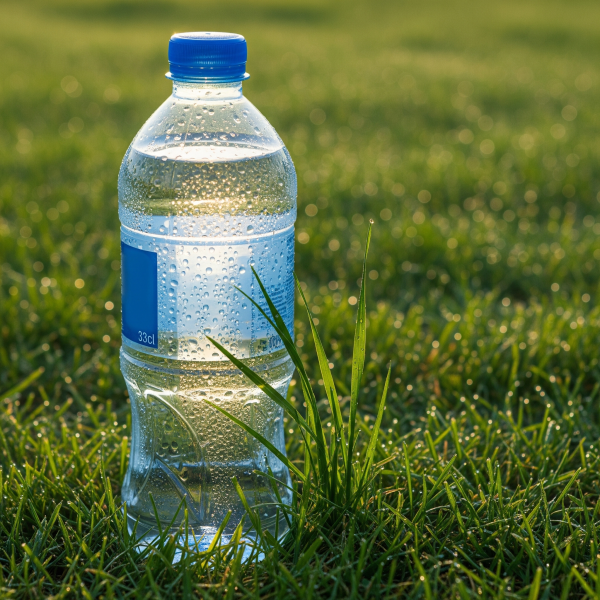
Nutrition for injury prevention in children
Good nutrition not only improves sports performance, but also reduces the risk of sports injuries in children. When the body does not receive adequate nutrients, muscles, tendons and bones can weaken, increasing the possibility of problems such as sprains, fractures or inflammation.
how can injuries be prevented with proper nutrition?
Calcium and vitamin D are essential to strengthen bones, while protein and antioxidants help muscle recovery. According to KidsHealth, an athletic child should include in his or her diet:
- Dairy (milk, yogurt, cheese) to maintain strong bones.
- Fish and nuts, rich in omega-3, to reduce inflammation.
- Fruits and vegetables, which provide antioxidants to protect muscles.
what vitamins does a child athlete need to avoid injuries?
Vitamins play a key role in joint and muscle health. Here are some of the most important ones:
- Vitamin D: Improves calcium absorption. It is found in fish, eggs and sun exposure.
- Vitamin C: Contributes to collagen production and keeps tendons strong. Present in citrus fruits and peppers.
- Iron: Prevents fatigue and improves oxygen transport. It is found in lean meats, spinach and legumes.
Maintaining a varied and balanced diet can make a difference in the endurance and recovery of the child athlete.
Recovery after injury: the role of nutrition
When a child suffers an injury, nutrition plays a key role in his or her recovery. Consuming the right nutrients can speed up the healing process and prevent complications.
how can good nutrition speed recovery?
During the recovery phase, the body needs more protein and antioxidants to repair damaged tissues. The aforementioned Nutrition Guide for Children’s Sports of the Government of Aragon recommends including in the diet:
- Lean proteins (chicken, fish, eggs) to regenerate tissues.
- Fruits rich in vitamin C (kiwi, strawberries, oranges) to reduce inflammation.
- Foods with zinc (nuts, legumes) to promote healing.
Post-injury diet plan
To help children recover faster, it is important to spread meals throughout the day. An example of a recommended menu would be:
- Breakfast: yogurt smoothie with strawberries and almonds.
- Lunch: Brown rice with salmon and spinach.
- Snack: Whole wheat bread with cheese and nuts.
- Dinner: Chicken breast with mashed sweet potato and salad.
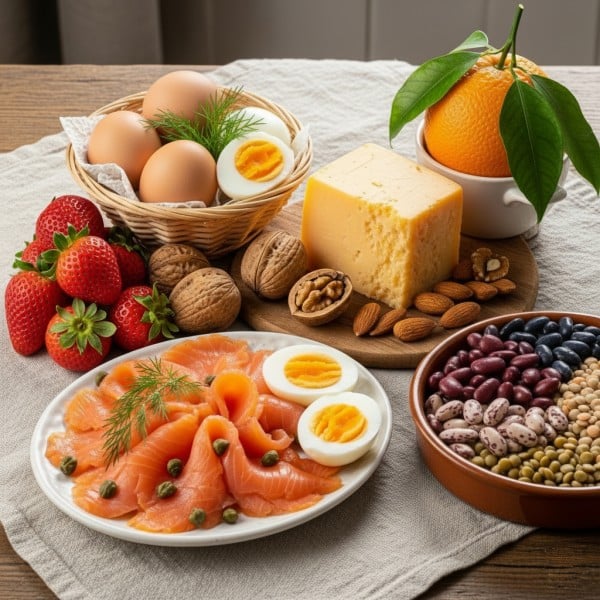
According to Libby’s, anti-inflammatory foods such as olive oil and avocado can also help relieve pain and improve recovery.
Conclusion
Sports nutrition for children is a cornerstone of their performance, development and well-being. It’s not just about eating more, but about choosing foods that provide the right energy and nutrients for each stage of their growth and activity level.
If your child trains regularly or participates in intensive programs such as Ertheo’s soccer camps, they need adequate nutrition to maintain their energy. Make sure they get the caloric intake they need and follow a balanced diet to keep their performance in peak condition.
As a parent, you can make a big difference. Encouraging healthy eating and maintaining good hydration will allow your child to enjoy the sport with energy, less risk of injury and more effective recovery. Their success starts at the table!

